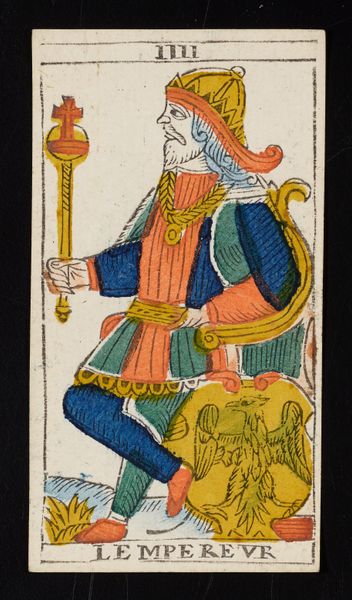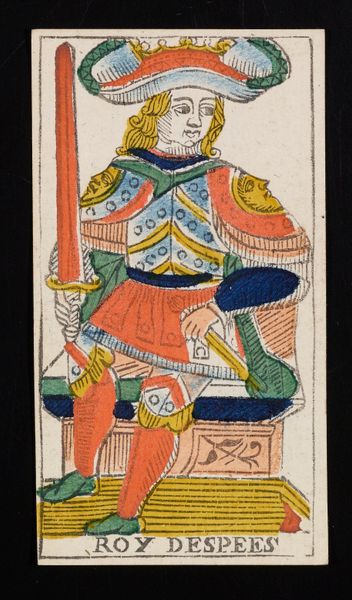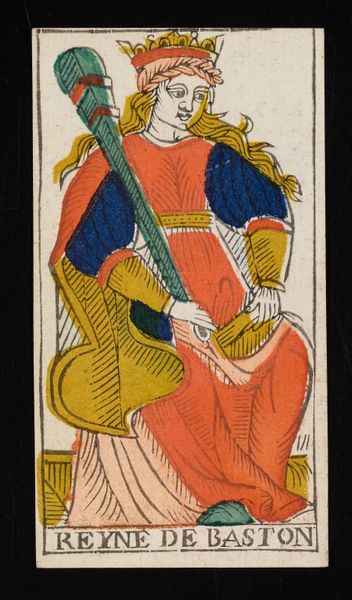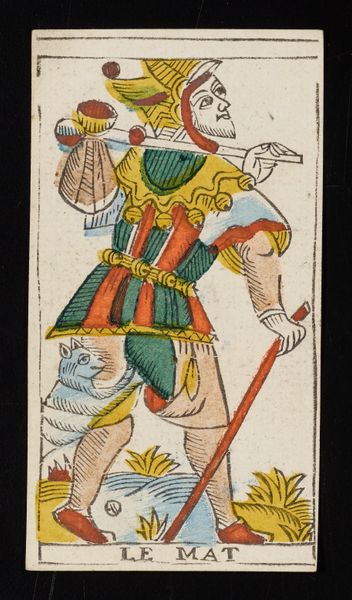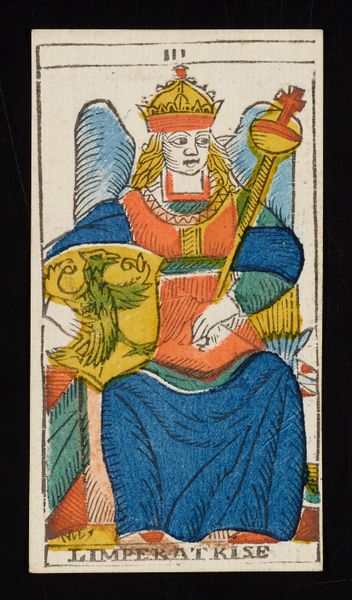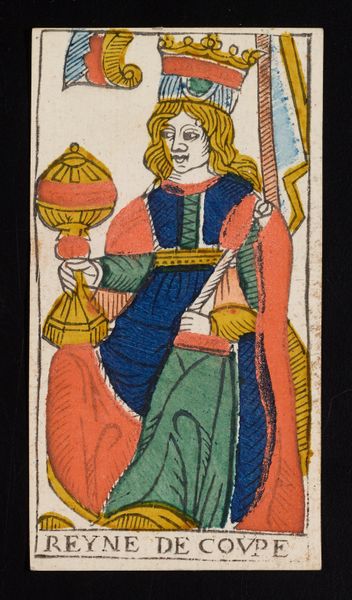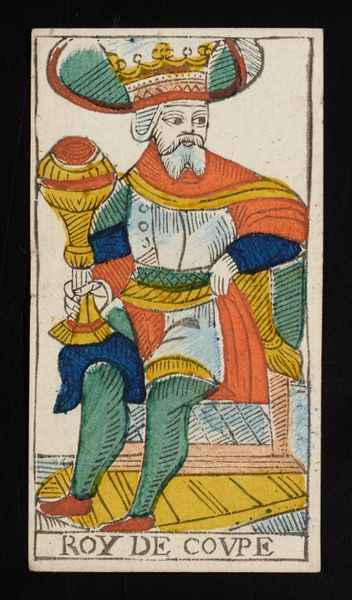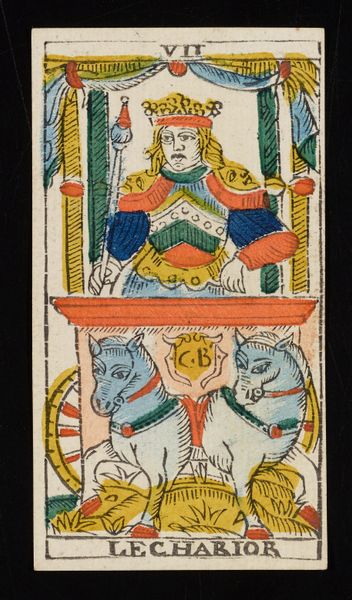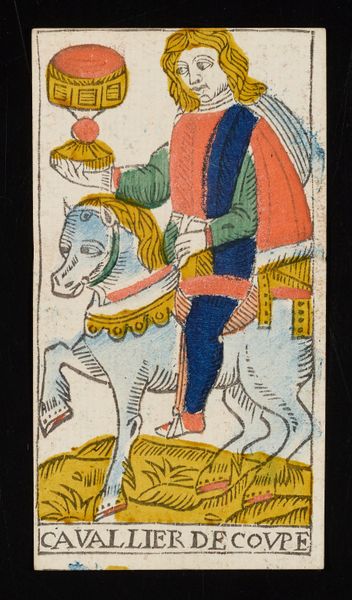
#
portrait
#
baroque
# print
#
figuration
Dimensions: 4 7/16 x 2 7/16 in. (11.27 x 6.19 cm) (image, sheet)4 5/8 x 2 1/2 in. (11.75 x 6.35 cm) (sheet, each)
Copyright: Public Domain
Editor: Here we have "King of Batons," a print from 1751 by Claude Burdel, housed here at the Minneapolis Institute of Art. It has an interesting, almost flat quality, like an image from a deck of playing cards. It's playful, but also a bit stiff. What are your thoughts about this artwork? Curator: Ah, yes, "King of Batons!" Looking at him, I can't help but imagine him as a character in some absurdist play. His oversized hat, that somewhat vacant stare, it all smacks of caricature, doesn't it? But it's rooted in something deeper. It makes you consider how power presents itself. Is it all just costume and posing with large sticks? Editor: So, you see a performative aspect to it? Like he's *acting* as king? Curator: Precisely! And considering its historical moment – 18th century Europe, on the cusp of major social upheavals – this image takes on added significance. It makes one ponder: is royalty genuinely divine or merely a performance? It reminds me of gazing into a distorted carnival mirror reflecting the world of aristocratic flamboyance, just before the music stops! Don't you get that impression? Editor: I do. Now that you point it out, there's definitely a sense of artificiality there. Almost like a commentary, however subtle. Curator: And there's something strangely appealing about that crudeness, don't you think? This pre-photographic rawness allows the King to express a different kind of story. Now tell me, what do you take away from seeing art like this, where the boundaries between high and low culture become happily blurred? Editor: It really broadens my understanding. I’m no longer looking just for the conventionally beautiful or skillful, but thinking about historical context, and even the artist’s intention in depicting this king! It's fascinating.
Comments
No comments
Be the first to comment and join the conversation on the ultimate creative platform.
